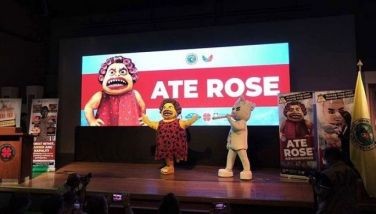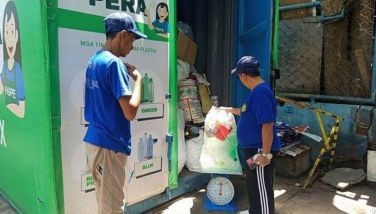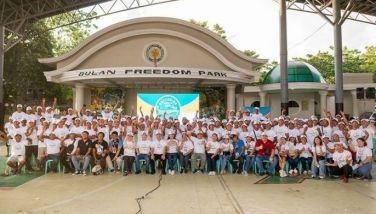Historical lessons from the Death March
Araw ng Kagitingan, formerly called "The Fall of Bataan" has been made positive by President Cory Aquino by renaming this day as The Day of Valor, in honor of the thousands of defenders who died trying to hold their lines against the Japanese Imperial Army.
Today, we celebrate the 83rd anniversary of the Death March, which is a landmark historical event on the Filipinos' struggles for freedom, democracy and independence. Reminiscing the bitter memories of that event, we should learn how both America and Japan impacted adversely on the Filipinos' painful experiences as a nation.
The Philippines found itself caught in the crossfire on December 7, 1941, when Japan attacked the US military bases in Pearl Harbor. That treacherous attack killed no less than 2,008 sailors and injured 710 others. A total of 218 US Air Force soldiers were killed, 364 were wounded, while 109 Marines were killed and 69 wounded. Some 68 civilians were also killed and 35 wounded.
No less than 18 US warships were sunk, including five large battleships. It was a crime against humanity because there was no prior declaration of war. The Japanese invasion of the Philippines started forthwith on December 8, 1941, barely 10 hours after the Pearl Harbor attack. The Philippines had no conflict with Japan. We were only attacked because we were under the commonwealth. To hit the Philippines was equal to attacking America.
The Japanese pulverized the Philippines and killed a million Filipinos. Filipino women were made sex slaves, held as virtual prisoners, and forced to serve as comfort women. Infants and children were killed mercilessly. Japan committed heinous, despicable, and inhumane acts against the Filipinos. Japan destroyed many historical and cultural sites and landmarks in our country, destroyed the economy, and caused untold anguish and misery.
General Douglas MacArthur withdrew to Australia, leaving the Filipinos and a few Americans, poorly equipped and with low morale, entrusted to hold our positions and to defend our country. The defenders of Bataan and Corregidor just numbering about 78,000 were ill-fed, many were wounded, sick, and exhausted. They were lacking ammunition and food. They were surrounded by battalions of heavily-armed Japanese invaders. They could no longer hold their position or else they would be massacred by the cruel and unforgiving Japanese.
On April 9, 1942, against the instruction of General MacArthur, USAFFE commander Major General Edward King surrendered the 78,000 Filipinos and Americans to Colonel Mootoo Nakayama of Japan's 14th Army. All of them were considered prisoners of war and had to obey the orders of the Japanese. They were made to walk under the scorching heat of the April sun. One group started from Bagac, the other from Mariveles, Bataan. The distance between Bagac to San Fernando, Pampanga is 81.8 kilometers. The distance between Mariveles to San Fernando is even farther.
Along the way, about 11,000 to 18,000 died of exhaustion, heat stroke, and starvation. Those who attempted to escape were summarily executed. Those who just wanted to get water to drink were either stabbed or shot dead. The Japanese never allowed them to rest. The captors were riding in jeeps and trucks while the captives were walking, many of them barefoot. From San Fernando, they had to travel again to Capas, Tarlac, another distance of 43 kilometers.
In September 1945, or three years after a long and painful struggle, General Masaharu Homma was arrested by Allied troops. He was charged with war crimes, tried, and convicted. He was sentenced to death. He was eventually executed on February 26, 1946 by firing squad outside Manila. But no execution can pay for all the losses, damage, devastation, and suffering of the Filipinos. Japan has never apologized to the Filipino women who were made sex slaves against their will.
Japan has never been our enemy from the very beginning. But that country has caused so much anguish to our people and too much destruction to our country. America too has drawn us into a conflict that we never wanted in the first place. Today, we should remember all this. In formulating our foreign policies, we should remember that when two great powers collide the small and poorer countries are almost always caught in between Scylla and Charybdis.
Today, as we recall the Death March, even as we call this day Araw ng Kagitingan, we need to demand justice from Japan and America. They have a lot to answer to us and to our posterity.
- Latest




















